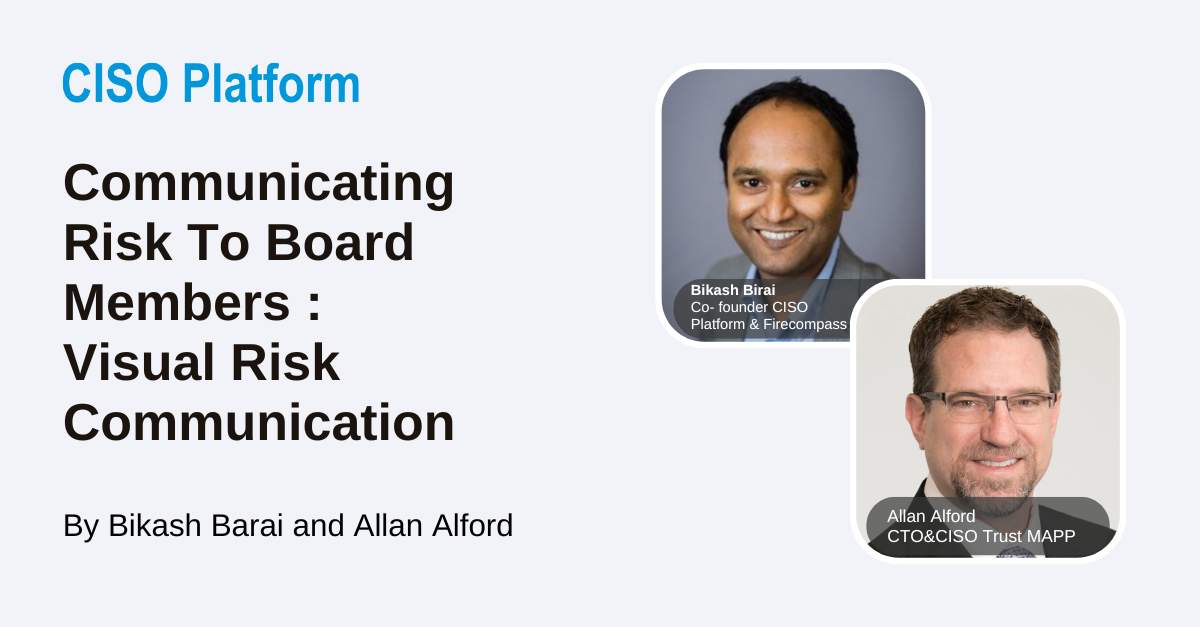In the realm of risk communication, simplicity and clarity are paramount when conveying complex information to management or board members. While traditional models like the 5x5 matrix are widely used, some organizations opt for a more intuitive approach, such as using heat maps, to present risk data. This discussion explores the effectiveness of heat maps as a tool for risk communication and their potential advantages over numerical-based models.
Here is the verbatim discussion:
Bikash Barai is credited for several innovations in the domain of Network Security and Anti-Spam Technologies and has multiple patents in USPTO. Fortune recognized Bikash among India’s Top 40 Business Leaders under the age of 40 (Fortune 40-under-40).Bikash is also an active speaker and has spoken at various forums like TiE, RSA Conference USA, TEDx etc.
Earlier he founded iViZ an IDG Ventures-backed company that was later acquired by Cigital and now Synopsys. iViZ was the first company in the world to take Ethical Hacking (or Penetration Testing) to the cloud.
https://twitter.com/bikashbarai1
https://www.linkedin.com/in/bikashbarai/
Allan Alford was in the CISO/CTO at TrustMAPP, a cybersecurity performance management company. With 20+ years in information security, he has served as CISO four other times in three industries. Alford parlayed an IT career into a product security career and then ultimately fused the two disciplines.
He has led security efforts in companies from five employees to 50,000 and executes a risk-based approach to security, as well as compliance with many, many frameworks. Alford gives back to the security community via The Cyber Ranch Podcast and by authoring articles and speaking at conferences. Alford holds a Master of Information Systems & Security, a Bachelor of Liberal Arts (with a focus on leadership) and a now-expired CISM certification.
https://twitter.com/AllanAlfordinTX
https://www.linkedin.com/in/allanalford/


Comments